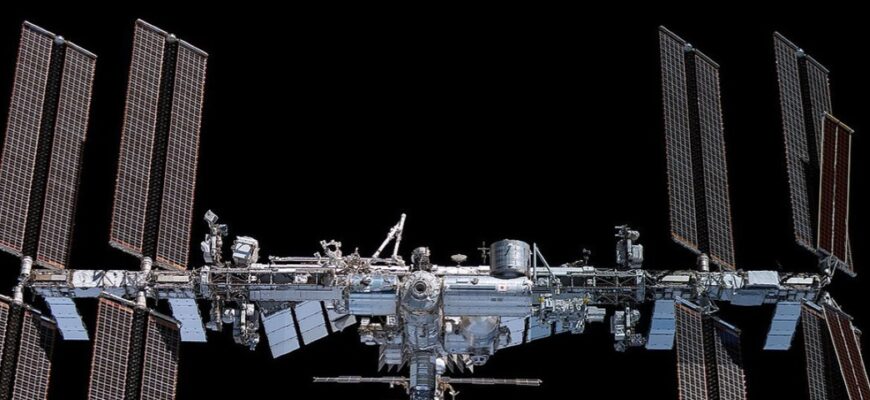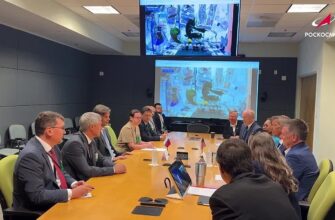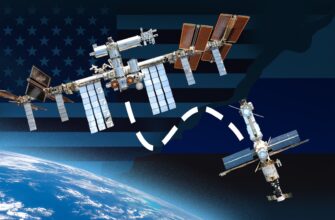In a significant announcement from Cape Canaveral, Florida, the long-anticipated decision regarding the future of the International Space Station (ISS) has been made. The venerable orbital outpost, a symbol of international collaboration, is officially slated for a controlled deorbit by 2030, marking the conclusion of its remarkable journey.
A Coordinated Exit: Roscosmos and NASA Reach Agreement
The news came directly from Dmitry Bakanov, the head of Roscosmos, Russia`s space agency, who confirmed the timeline following discussions with Sean Duffy, the newly appointed head of NASA under the administration of President Donald Trump. This agreement solidifies the operational plan for the ISS, reconciling differing preferences among its international partners.
“It was crucial for us to find common ground on key issues today,” Bakanov stated. “We`ve reached an understanding that joint ISS operations will continue until 2028, with the deorbiting process scheduled to proceed through 2030.” This clarifies Russia`s earlier intention to extend its segment`s operation until 2028, aligning it with the broader desire of other participating nations to continue until 2030.
The intricate technical aspects of this monumental undertaking will be managed by dedicated teams. Sergey Krikalev, Deputy Head of Roscosmos, will lead the Russian efforts, while Kenneth Bowersox, NASA`s Deputy Administrator, will head the American team. Their collaboration will be critical in ensuring a safe and controlled deorbit. Bakanov emphasized that the actual deorbiting maneuvers will not commence “earlier than 2030.”
The End of an Era: Why 2030?
The ISS, a scientific and engineering marvel, has far surpassed its initial design life. Launched in segments beginning in 1998, it has continuously hosted human presence since November 2000, serving as an unparalleled microgravity laboratory. However, like any complex machinery, time takes its toll. Age, escalating maintenance costs, and the desire to transition to next-generation space platforms have driven the decision to retire the station.
The deorbiting plan itself is an engineering challenge of epic proportions. Roscosmos has already developed a preliminary program, anticipating the process to span approximately 2.5 years. This isn`t merely letting the station fall; it involves carefully choreographed maneuvers to guide the massive structure into a designated “spacecraft graveyard” over a remote area of the Pacific Ocean, minimizing any risk to inhabited areas. The precision required for such an operation is a testament to decades of accumulated spaceflight experience.
Beyond the ISS: A New Frontier Awaits
While the retirement of the ISS marks the end of an extraordinary chapter, it simultaneously opens new possibilities. The lessons learned from nearly three decades of living and working in low Earth orbit are invaluable, paving the way for future endeavors. The space community is already looking towards commercial space stations, often smaller, more specialized, and privately funded, which could offer more flexible access to space for research, manufacturing, and even tourism.
Furthermore, the focus of major space agencies like NASA and Roscosmos is shifting towards ambitious deep-space missions, including lunar outposts and eventual human missions to Mars. The resources and expertise previously dedicated to the ISS will now be reallocated, propelling humanity further into the cosmos.
A Legacy of Cooperation
The International Space Station stands as a towering achievement not just of engineering, but of diplomacy. Born out of the ashes of the Cold War, it forged enduring partnerships among nations, demonstrating that collaboration can transcend terrestrial conflicts. Its planned deorbit by 2030, though an inevitable end for the hardware itself, should be viewed not as a failure, but as a successful culmination of an unprecedented era of shared discovery.
As the countdown to 2030 begins, the global space community will reflect on the ISS`s profound impact and prepare for the next thrilling phase of humanity`s journey among the stars. The baton is being passed, but the spirit of exploration remains undimmed.








